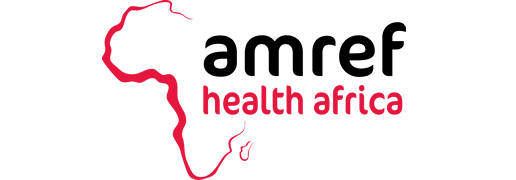The NGO Amref Salud Africa warns of the current serious climate situation and denounces that the lack of rain for 3 seasons, added to the conflict in Ethiopia, could lead to the worst food crisis since 2011 in Somalia.
Water, more than a right, is a privilege for some. While in some countries the waste of this essential element for life is a constant, in Africa 1 in 3 people face a lack of water every day and 300 million people in Sub-Saharan Africa do not have access to drinking water in their communities . According to the United Nations, half of the people who drink unsafe water live in Africa. The NGO Amref Salud Africa, which works for a healthier society where the right to health care is guaranteed, without leaving anyone behind, denounces that the climate crisis also threatens the continent, and without greater investment, this problem will be aggravated by the population growth in the coming decades.
The situation was already complex on the continent and the current COVID-19 pandemic has further exposed the inequality of access to water. Something as simple as hand washing in the prevention of infections, diseases or the transmission of the virus is a luxury in many countries of the continent. Specifically, a quarter of the health centers in the world lack access to water and more than 40% are in Sub-Saharan Africa. According to the report “Progress in terms of drinking water, sanitation and hygiene in schools” by the WHO and UNICEF, 6 out of 10 children in Sub-Saharan Africa do not have access to basic hygiene services in their schools.
Amref also warns that one of the regions most affected by the lack of access to water is the Horn of Africa, where the effects of climate change have a direct impact on the seasonal droughts that the area suffers and on the food security of its population. . As if that were not enough, in the case of Ethiopia, they are also facing an armed conflict that already threatens the food security of millions of people. In this context, humanitarian assistance will be vital in the coming months, but we must not lose focus on improving the resilience of communities and their sustainable access to water.
According to the World Food Program 5.7 million people need food assistance in Ethiopia. Amref Salud Africa has launched, with funding from the Spanish Agency for International Development Cooperation, a project in the Afar region to improve food security for families. Agricultural and livestock cooperatives have been formed, in addition, the nutrition of lactating and pregnant mothers has been improved and health centres have been provided so that they can attend to nearly 25,000 children under 5 years of age. In Kenya, the drought endangers 2.8 million people and in Somalia, 4.6 million people could be food insecure in May 2022 if we do not intervene with humanitarian aid (World Food Programme).
In this region, 3 years have accumulated without rain and with insufficient harvests. Aisha Al-Said Albella Director General of Amref Health Africa stated that: “Who else is suffering from this lack of rain are the pastoral and agricultural communities. Livestocks are dying, food prices are rising, and families are without access to safe water. We may face a serious humanitarian crisis in the coming months. The number of boys and girls who need nutritional treatment is beginning to rise and without access to water, we will soon see an upturn in illnesses in children under 5 years of age.”
World Water Day 2022
Today, March 22, marks World Water Day, an opportunity to reflect on the importance of preserving this resource, especially in regions such as Africa where it is a scarce resource. This year the United Nations emphasizes the importance of groundwater. About 40% of the water we consume worldwide comes from aquifers and especially in countries where water is scarce, where they depend almost 100% on it. The estimated population growth of 9,000 million people in 2050 could end this resource. Groundwater is vital for our development and plays an important role in climate change.
In this scenario, Amref Health Africa in Kenya has launched the “Sustainable water for the Maasai” project. Thanks to the support of Ferrovial, two sand dams have been built in the county of Kajiado that will supply water through wells equipped with solar energy, water storage tanks and water kiosks to more than 5,000 people. In addition, 5 tanks have been installed to collect rainwater in 2 health centres and 3 schools. A change for the inhabitants of the area, especially women and children. Women will have water available in their communities or villages, they are traditionally the ones in charge of obtaining water, and now they earn hours to dedicate to other activities. Boys and girls will also improve their health and education.
Sand dams provide water throughout the year, it is stored in the sand and this prevents its evaporation. Thanks to infiltration wells, impurities and contaminants are removed and it becomes safe for consumption. In addition, the water is extracted with solar pumps. These sand dams are a key tool to address environmental degradation in drylands. Recharging aquifers by obstructing the flow of groundwater through the river bed, resulting in continual replenishment of the expanded groundwater reservoir upstream of the dam. To face the challenges of the future such as population growth and climate change, it is essential that we work with a sustainable approach to water resources.
Article first published on https://diarioresponsable.com/noticias/32851-la-peor-sequia-de-los-ultimos-20-anos-amenaza-el-cuerno-de-africa
